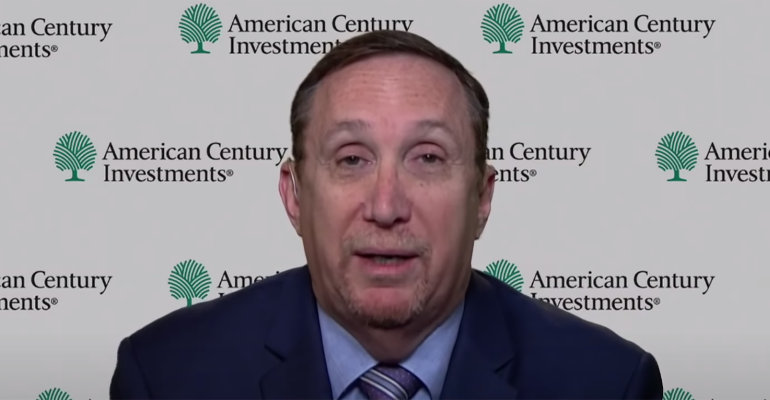Most years I read several white papers produced by investment management firms that describe how they develop their target-date funds’ glide paths. The papers address the same set of challenges and trade-offs facing plan participants such as longevity risk, market volatility, sequence-of-returns risk and investor behavior, among others. Nonetheless, the firms’ glide paths can differ significantly from each other for the same retirement cohort.
These papers often limit explanations of their paths’ construction to high-level insights but a June 2020 publication from American Century Investments, “The Making of a Glide Path: Understanding the Impact of Design Decisions on Retirement Outcomes,” (registration required) provides an unusually detailed explanation of the firm’s methodology. Even if you disagree with the authors’ conclusions and the firm’s resulting glide paths, it’s worth reading to learn more about the construction process. I recently spoke with Rich Weiss, a co-author and the firm’s Chief Investment Officer for Multi-Asset Strategies, about the paper.
Wealth Management (WM): What is your “no investor left behind” approach?
Rich Weiss: The way we've designed the strategy was to maximize the probability of retirement success and that's typically defined as not running out of money in retirement. Our goal is to maximize the probability of retirement success for the broadest number of participants with emphasis on the broadest, which is distinctly different from many of the competitors.
It's not just about who has the highest return. It's about the distribution of that return and how tight can you make it? How sure can you be that the broadest number of investors or participants can actually succeed in retirement? In statistical terms, you'll forgive the jargon, it involves what's called maximum likelihood techniques. We're focusing on not only the return, but the distribution of that return. So when you look at measures like risk-adjusted return or Sharpe ratios, we will tend to be superior.
WM: How does that approach differ from other firms?
RW: We’re all trying to solve the same problem, but how we navigate or balance the different risks is what differentiates us. Most of our competitors over the last 10 years, up through 2019, have been migrating more and more into equities and getting riskier with their glide paths in deference to the bull market that we experienced prior to 2020. We, on the other hand, stuck to our more balanced methodologies.
WM: The paper discusses the "risk aware" glide path. How does that translate to your path designs?
RW: One of the ways we achieve a more consistent, steady return, not only across time, but across participants, is by flattening the glide path. It's one of those trade-offs we make. We obviously give up something there, we give up growth early on. You'll notice that most glide paths in the industry are much higher in equity or risk exposure in the younger ages than ours are. But we give up some of that to trade it off to reduce sequence-of-returns risk. The glide path design is directly related to our underlying philosophy of balancing all of the risks out there, chief among them sequence-of-returns risk.
WM: Your firm uses a “to” versus “through” glide path. What factors led to that decision?
RW: We believe our design is more optimal for most participants for two reasons. The day you retire is the day you have the most money you're going to have because you’re not accumulating wealth anymore. Our glide paths are constructed so that the risk level is inverse to the level of wealth. It's mathematically, conceptually, theoretically, more elegant. In other words, we de-risk inversely related to wealth accumulation. Other firms tend to reduce risk in proportion to age so they simply assume that age is the appropriate metric on which to de-risk their positions and that is an older, antiquated concept. Modern portfolio theory has shown over and over again in academia and the real world that it's not age per se that drives risk tolerance—it's wealth level.
The other driver that makes sense to us is behavioral. You want to make sure that you have people at their minimum risk posture at retirement because that is the time at which they're most sensitive to losses. If there is a negative market event at that time, they are most likely to sell out at exactly the wrong time--it's called abandonment risk. So you want to make sure you're protected on the downside, especially right there at retirement date.





